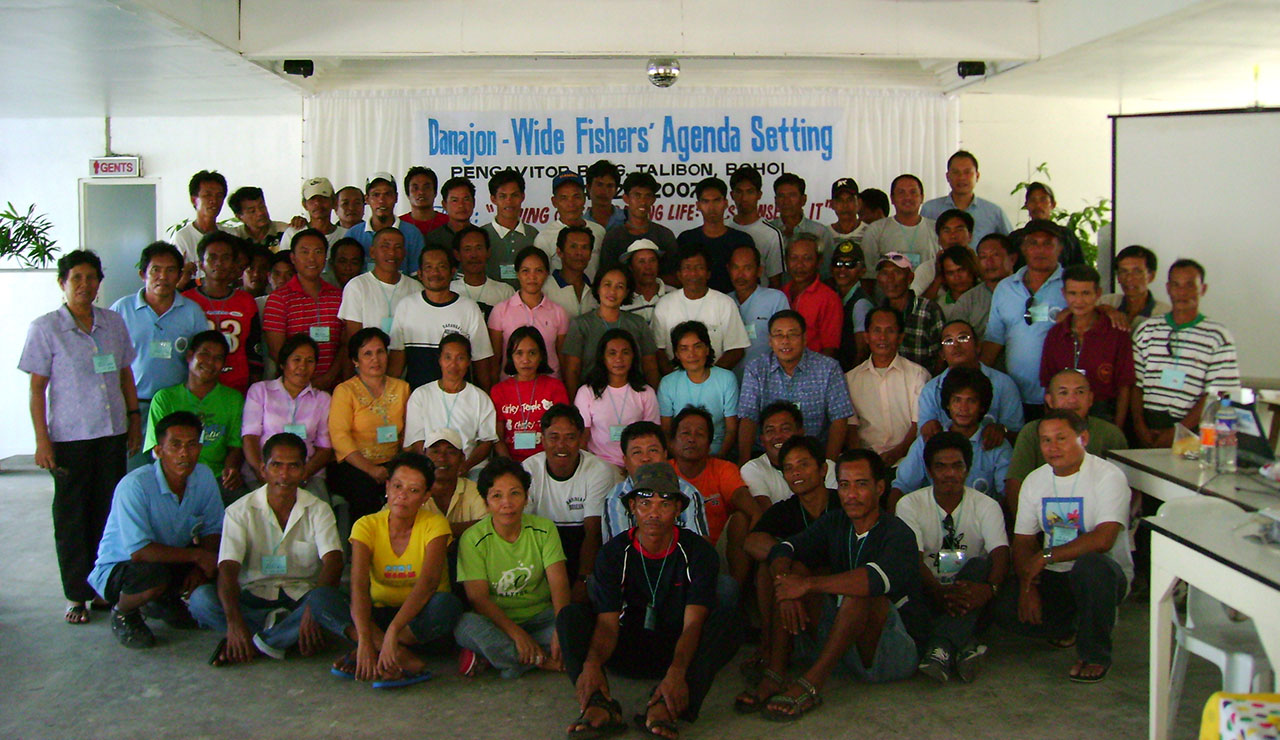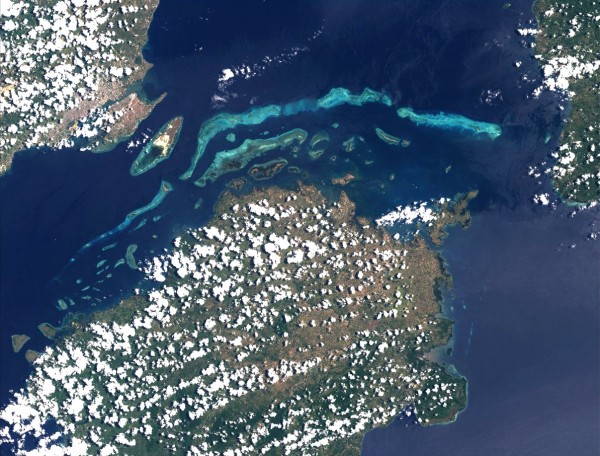Impact Stories
Marine Protected Areas as the Lifeblood of KAMADA Activities
Posted on January 29, 2015|
Project Title: Strengthening PO Capacities for Effective Ecosystem-based Management of Danajon Bank
Year: 2005 (January-December)
Grant Type: Action Grant
Site: Tubigon, Clarin, Buenavista, Getafe, and Talibon (Bohol)
Proponent: Project Seahorse Foundation (PSF) and Kapunongan sa mga Mananagat sa Danajon (KAMADA)
|

A lantern fisherman on Danajon Bank. (Stewart Green)
The role of MPAs as the cornerstone of the CBCRM strategy is not being taken for granted by the PSF field staff and the KAMADA members and officials. Pert Auxilio of PSF declares, “The MPAs are the concrete expression of KAMADA’s commitment to ecosystem conservation of Danajon Bank.”
The establishment of MPAs and the attendant tasks of managing and maintaining them serve as the center-of-gravity and focal point of KAMADA chapters’ daily activities. Other CBCR strategies such as community-organizing and information, education, and communications campaign activities; lobbying and advocacy – are based on the need to sustain and strengthen the marine sanctuaries. MPAs are the lifeblood that sustains the activities of KAMADA chapters. Hermes Cosicol, PSF LCO, said, “Kung walang MPAs sa Danajon, maraming illegal fishers ang pumapasok sa municipal waters.” (If there were no MPAs in Danajon, illegal fishers would be able to enter municipal waters.)

The Danajon Bank fishers’ agenda was proof of KAMADA’s increasing capacity to manage its activities and resources on its own. (Project Seahorse Foundation)
When asked how MPAs affect the fishcatch of fisherfolk, KAMADA members say that initially, those who were used to reaping high yields through illegal fishing, including a number of KAMADA allies, suffered from the sudden slump in their catch. KAMADA members, however, tend to have a broader perspective and thus are more prepared to sacrifice short-term yields for long-term benefits, not only for their own sake, but for the ecosystem in Danajon Bank. They even helped allay the fears of some communities that MPAs will decrease the already dwindling fishing areas, and thus compound the economic hardships of the suffering marginal communities. Said Guillermo Reyes, KAMADA Treasurer, “Ang MPAs mao ang breeding grounds… kon sa dagat, kon walay lugar napreserba, tanan mawasak-wasak. Sa sanctuary, ang mga dagku (nga mga isda) molangyaw ug gagmay ra mabilin. Di lang isda ang mapanalipdan, kundi tanan nga sakop sa marine life.” (The MPAs are breeding grounds… in the oceans, if there is no place reserved for conservation, all will be destroyed. In the sanctuary, the fish can flourish. Not just fish but the entire marine life.)
The concrete gains in improving the conditions of Danajon Bank and its coastal communities are not lost on KAMADA members. For one, illegal fishing practices, such as dynamite blasting, are said to have been significantly reduced. In Barangay Busalian, Talibon, 80% of fisherfolk practiced illegal fishing before the advent of MPAs. Now, with the MPA implementation, only less than ten dynamite fishers are left. In Gaus, Carlos P. Garcia, during a community assembly to decide on an MPA site, KAMADA members debated intensely with those who opposed MPAs, including illegal fishing practitioners. After much deliberation, the assembly finally voted that 20 hectares of fishing grounds in their area be turned into an MPA.
Fisherfolk communities have reported observable fish population recovery in MPAs and an increase in their fishcatch. Blanco contends that the first data sets collected in PSF’s food fish monitoring for the period 2005 to 2006 needs to be analyzed and used to improve the design of monitoring tools.

Danajon Bank is one of only six double barrier reefs in the world and the only double barrier reef in the Philippines. (GMANetwork.com)
MPAs can be a long-term feature of marine biodiversity conservation. As a resource management tool, it is still an unsettled issue even among biologists and social scientists,” says Blanco. “However, PSF is confident that the MPAs established through its support have yielded positive results. MPAs are not stand-alone solutions; they need to be complemented by effective law enforcement and other interventions. Otherwise, the community will end up with either rich MPAs but barren peripheries, or empty MPAs, because poaching is left unchecked due to poor enforcement.”
Danajon Bank reportedly counts at least 80 MPAs managed by either POs, NGOs, or LGUs. Of this number, 28 MPAs were facilitated by PSF.
(Contributed by Samuel Gambo)
* * * * *
Adapted from “Fisherfolk as Partners in Restoring Danajon Bank” in Manipon AJN and Mesina SR. 2009. “Communities, Conservation, and the Filipino Environmentalist.” Quezon City, Philippines: Foundation for the Philippine Environment.

 DISPLAY CALENDAR
DISPLAY CALENDAR
 Read Policy Briefs
Read Policy Briefs
 View Our Partners
View Our Partners
 Access Grants MIS
Access Grants MIS
 Login to Webmail
Login to Webmail